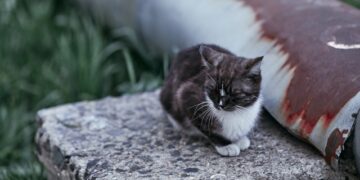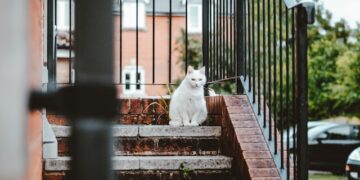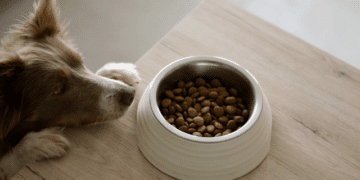Adding plants to your home is a great way to boost aesthetics, purify the air, and bring nature indoors. But for pet owners, not all greenery is safe. Many popular houseplants can be dangerous or even deadly to cats, dogs, and other animals if ingested. Whether you’re a seasoned plant parent or just getting started, it’s crucial to know which are pet-friendly plants and which are toxic plants for pets.
In this guide, we’ll walk through the best indoor plants safe for pets, the most common toxic plants to avoid, and how to maintain a lush, pet-safe home environment.
Why Plant Safety Matters for Pets
Pets, especially curious cats and dogs, are known to nibble on leaves, dig in the soil, or chew on stems. While some plants may only cause mild stomach upset, others can lead to severe symptoms such as vomiting, organ failure, or even death.
Knowing which plants are safe houseplants for cats and dogs can help you avoid stressful vet visits and costly emergencies. Even plants that aren’t deadly can cause unnecessary discomfort for your furry friends. Creating a pet-safe space is a proactive step every responsible pet owner should take.
Top Pet-Friendly Plants
Thankfully, there are plenty of non-toxic plants for pets that are both attractive and safe. These plants can coexist peacefully with your animals, offering the best of both worlds greenery and peace of mind.
1. Spider Plant (Chlorophytum comosum)
Spider plants are a favorite among pet owners. They thrive in indirect sunlight, are easy to maintain, and are completely safe for cats and dogs.
2. Areca Palm (Dypsis lutescens)
Also known as the butterfly palm, this elegant tropical plant is a pet-safe alternative to toxic palm varieties like the sago palm. It adds height and lushness to any space.
3. Calathea
With its vibrant patterned leaves, Calathea is a stylish choice that’s also a safe houseplant for pets. It prefers lower light, making it ideal for apartments or shaded rooms.
4. Boston Fern (Nephrolepis exaltata)
This leafy plant is non-toxic and works well in hanging baskets or plant stands. Just make sure it stays moist and gets some humidity.
5. Basil, Thyme, and Other Herbs
Many culinary herbs like basil, thyme, and rosemary are pet-friendly and can double as both decoration and seasoning. These are great for kitchen windowsills.
Common Toxic Plants to Avoid
While many plants are harmless, some are extremely dangerous to pets. Here are a few of the most common plants toxic to dogs and cats that you should steer clear of if you share your home with animals.
1. Lilies (Lilium species)
Lilies are beautiful but deadly especially to cats. Even small ingestions, such as licking pollen or chewing a leaf, can cause kidney failure in cats.
2. Sago Palm (Cycas revoluta)
This ornamental palm is often used in landscaping but is highly toxic to both cats and dogs. Ingesting any part of the plant can result in vomiting, liver failure, or death.
3. Aloe Vera
While aloe is great for humans, it’s not so friendly for pets. Aloe contains compounds that can cause vomiting, lethargy, and diarrhea if ingested by animals.
4. Philodendron and Pothos
These popular trailing plants are on many pet owners’ shelves but contain calcium oxalates, which can cause oral irritation, swelling, and drooling in pets.
5. Dieffenbachia (Dumb Cane)
A favorite for offices and homes, Dieffenbachia causes burning sensations, vomiting, and swelling in the mouth and throat when chewed by pets.
Tips for Creating a Pet-Safe Green Space
You don’t have to give up your plant obsession to keep your pets safe. By following these tips, you can enjoy a thriving indoor garden and a healthy pet.
-
Place plants out of reach. High shelves, hanging baskets, and closed terrariums help keep tempting foliage away from curious mouths.
-
Choose heavy pots. Pets like to dig or tip over pots. Heavier containers can reduce mess and accidents.
-
Train pets gently. Use positive reinforcement to teach pets not to chew on or play with plants.
-
Use physical barriers. Decorative fencing or mesh can keep pets out of planters and garden beds.
-
Rotate plants safely. If you’re unsure about a new plant, place it in a separate room and monitor your pet’s behavior before introducing it more widely.
What to Do if Your Pet Eats a Toxic Plant
If you suspect your pet has ingested a harmful plant, act quickly.
-
Remove any plant material from your pet’s mouth.
-
Identify the plant, including its common and botanical name if possible.
-
Call your veterinarian or contact the Pet Poison Helpline at (855) 764-7661.
-
Monitor symptoms like vomiting, lethargy, drooling, diarrhea, or seizures.
The sooner you get help, the better the chances of recovery. Always keep emergency contacts accessible.
Resources for Pet Owners
To stay informed and updated about safe plants, check out these resources:
-
ASPCA’s Toxic and Non-Toxic Plant List: A comprehensive and searchable database.
-
Pet Poison Helpline: Offers 24/7 assistance with pet toxicities.
-
Local vets and emergency clinics: Your first line of defense in a plant poisoning emergency.
Final Thoughts
Plants and pets can live together in harmony as long as you’re careful about what you bring into your home. By choosing pet-friendly plants and removing toxic ones, you can create a space that is both beautiful and safe.








